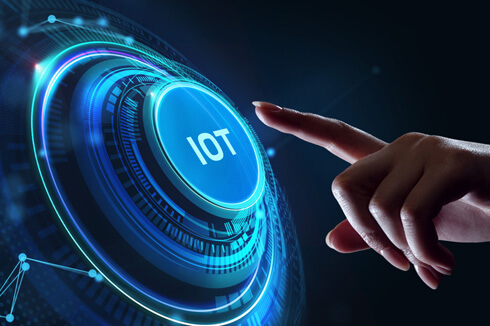Urban living is growing more and more important as the world’s population expands. It must be efficient, sustainable, and intelligent. Technology has significantly influenced the idea of smart cities during the past few decades. This article on the blog analyzes the development of smart cities and the ways in which technology is changing urban life and making our cities greener, safer, and more connected than ever.
What is Smart City?
An urban setting that enhances the quality of life for its residents via the use of technology and data-driven solutions is referred to as a smart city. Smart cities strive to improve resource management, improve public services, and support sustainable development by utilizing the power of the Internet of Things (IoT), artificial intelligence (AI), and other cutting-edge technology.
Smart City Development
Modern technology is incorporated into urban infrastructure as part of the creation of “smart cities,” which promotes surroundings that are efficient, integrated, and sustainable. Smart cities seek to improve public services, optimise resource management, and raise citizens’ general quality of life in order to shape the future of urban living. They do this through utilising the following data-driven solutions:
Internet of Things

The Internet of Things (IoT) has been one of the most important technical developments fostering the development of smart cities. IoT devices, such sensors and connected systems, collect and send data in real-time, empowering city administrators to make decisions about many facets of urban planning and management. The Internet of Things has cleared the path for a more effective and sustainable urban lifestyle, from controlling traffic and waste collection to monitoring air quality and traffic congestion.
Machine Learning and Artificial Intelligence
Advancements in smart city projects have been made possible by the fusion of artificial intelligence (AI) and machine learning (ML) technology. By analyzing the massive amounts of data produced by IoT devices, these technologies enable the discovery of patterns, the prediction of outcomes, and the generation of insightful recommendations. Transportation, public safety, and resource management are just a few of the areas where AI-powered solutions have enhanced urban living.
Intelligent Transportation Systems
Urban living is dependent on transportation, which has undergone a revolution. People now move around cities much more efficiently thanks to smart transportation systems, which integrate cutting-edge technology like AI, ML, and IoT. Smart transportation technologies are making urban travel safer, more effective, and less congested, from real-time traffic monitoring and adaptive traffic signals to autonomous vehicles and integrated public transit systems.
Adaptive Energy Technologies
The creation of smart cities has sustainability as a major focus. As well as enabling more effective energy management techniques, technological advancements have encouraged the introduction of renewable energy sources like solar and wind.
Smart grids, energy storage systems, and innovative construction technologies have all helped to reduce energy use and greenhouse gas emissions, making our cities greener.
Public Participation through Digital Connectivity
The rising significance of online connectivity and public participation has also been a hallmark of the development of smart cities. Collaboration between city officials and inhabitants has increased as a result of modern communication technology like 5G networks and fast internet. In order to create a more inclusive and participatory urban environment, digital platforms and mobile applications enable residents to access public services, raise issues, and provide feedback.
Technologies for Enhanced Public Safety and Security have made smart cities much safer and more secure. Law enforcement personnel may monitor public areas and identify potential threats with the aid of surveillance systems that use AI-powered video analytics and facial recognition. Moreover, IoT gadgets and AI-driven emergency response systems make sure that first responders can react to incidents quickly, thereby reducing risks and saving lives.
Future Smart City Technology
Future-looking research will expand the capabilities of smart cities by integrating cutting-edge technologies and data-driven solutions. Some tendencies to watch out for are as follows:
- Using blockchain technology
Supply chain management, for example, might be completely transformed by blockchain technology. - Utilizing the Edge: Edge computing enables processing of data closer to the point of origin, lowering latency and increasing the effectiveness of smart city systems. Edge computing will become more crucial for real-time decision-making and resource allocation as the amount of data produced by IoT devices continues to increase.
- 5G networks: The expansion of 5G networks will have a big impact on how smart cities are built. 5G technology will make it possible for new applications, like real-time traffic control, remote healthcare services, and more sophisticated IoT solutions.
- Digitized twins: With the help of digital twins, which are virtual replicas of real-world assets or systems, city administrators and planners can simulate and evaluate alternative scenarios. Cities may maximize resource allocation, infrastructure upkeep, and urban planning by utilizing digital twin technologies, which will ultimately improve urban living conditions overall.
- Virtual and augmented realities: The way people experience and engage with their urban environment could be drastically changed by AR and VR technologies. AR and VR applications can open up new avenues for citizen involvement, education, and entertainment, from real-time information overlays to immersive virtual tours of metropolitan sites.
Conclusion
Technology’s quick development and the growing demand for smart, efficient, and sustainable urban life have been the main forces behind the development of smart cities. The incorporation of cutting-edge technology, including AI, IoT, and 5G networks, will play an increasingly significant role in defining the future of urban life as our cities continue to develop and adapt. The need for sustainable, effective, and intelligent urban living is becoming increasingly important. By harnessing the power of these innovations, we can build greener, safer, and more connected cities that serve the needs of citizens while promoting sustainable development for future generations. Technology has significantly influenced the idea of smart cities during the past few decades. The development of smart cities is explored in this blog post, along with how technology is changing urban life and making our cities greener, safer, and more connected than ever.
One thought on “How Technology is Transforming Urban Life; A Case Study of The Evolution of Smart Cities”
Comments are closed.





This design is steller! You certainly know how to keep a reader entertained.
Between your wit and your videos, I was almost moved to start my own blog (well, almost…HaHa!) Fantastic job.
I really enjoyed what you had to say, and more than that, how you
presented it. Too cool!